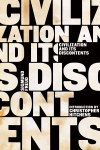Felisberto Hernández
 The Wednesday quotation, part XIX: I’ve been reading Felisberto Hernández, a very striking Uruguayan writer from the first half of the twentieth century who is practically unknown, especially in English. Some of his short stories have been translated, in a collection entitled Piano Stories (introduced by Italo Calvino, which should give a sense of why they might be of interest), but so far as I can tell this book never sold well and is now long out of print.
The Wednesday quotation, part XIX: I’ve been reading Felisberto Hernández, a very striking Uruguayan writer from the first half of the twentieth century who is practically unknown, especially in English. Some of his short stories have been translated, in a collection entitled Piano Stories (introduced by Italo Calvino, which should give a sense of why they might be of interest), but so far as I can tell this book never sold well and is now long out of print.
“The Stray Horse” is a story that begins by giving life to very concrete things: a marble bust, for instance, or furniture, or a pencil that “was anxious to be allowed to write” (17). Before long the narrator, a child depicted with his grandmother and with his piano teacher, Celina, with whom he is obsessed, can say that “the objects were more alive than we were” (18). As the story progresses, however, it takes on the perspective of the man that the child has become many years later and turns into a long disquisition on memory and on aging in which abstract ideas are presented with surprising vividness, as though they were tangible objects. It is as though the two halves of the story were mirror images of each other: the life of things, and the things of life that unite in (or divide) the narrator’s consciousness.
For in time, with the effort to recollect the past, the narrator finds himself multiplied, fragmented, transformed. He imagines a shadowy partner, who follows him wherever he goes and whom he dimly discerns to represent or incarnate the world of others around him. Though the two are often depicted as at odds, they also make common cause in the narrator’s adventures in consciousness and memory. This leads to an extraordinary passage that ultimately proves to be about something like creativity:
I have to thank him for the times he followed me at night to the edge of a river where I went to see the water of memory flow. When I drew some water in a jug and was saddened at how little and how still it was, he would help me invent other containers for it and comfort me by showing me its different shapes in the different vessels. Afterward we invented a boat in which to cross the river to the island where Celina’s house was. We would take along thoughts that fought hand to hand with our memories, knocking over or displacing many objects in the house. Some of the objects may have rolled under the furniture, and others we must have lost on our way back, because when we opened the bag with our hoard it was always down to just a few bones, and the small lantern we had been holding over the soil of memory dropped from our hands.Yet the next morning we always turned what little we had gathered during the night into writing. (43-4)
Meanwhile, here is something I wrote a few years ago specifically on “The Daisy Dolls” (“Las hortensias”).





